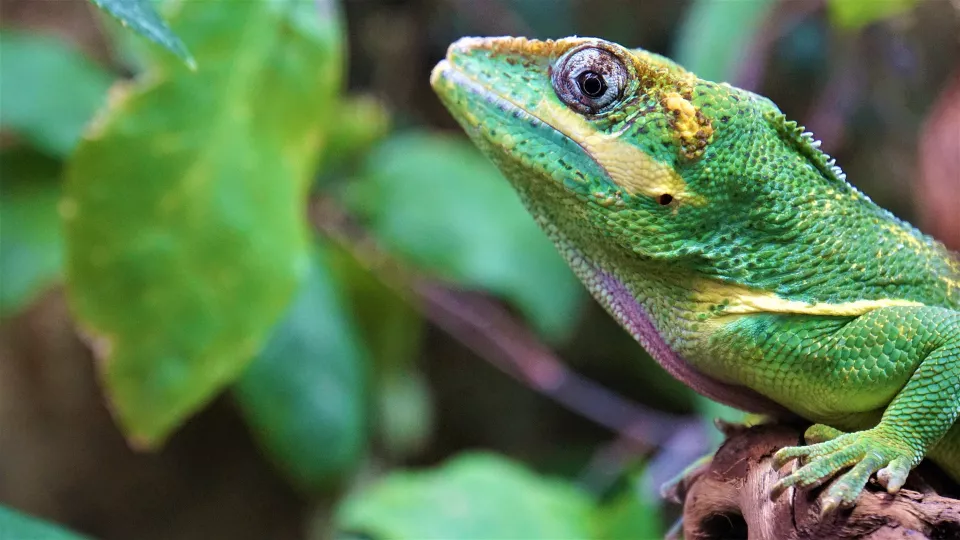– The IPBES assessments have already showed the hard evidence: a million animal and plant species are currently threatened with extinction, many within decades, and any action to halt and reverse this trend is crucial, she says.
She reflects that the new Post-2020 Global Biodiversity Framework is more ambitious than previous frameworks, and has aims to address direct and indirect drivers of biodiversity more explicitly.
– The new framework aims to act as a roadmap for the coming decade, in bending the curve on biodiversity loss and nature’s decline, says Mine Islar.
The framework consists of four global goals to be met by 2020, and 23 global 2030 targets. These goals and targets are organised into broad topics such as biodiversity conservation and restoration, nature’s contribution to people, access and benefit sharing, and tools and solutions for mainstreaming and implementation.
– Although the framework has an ambitious and clear goal, which may allow a path for where nature can recover, those who expected more quantitative measures may not be satisfied with the current framework, says Mine Islar.
What are the are most important points in the framework in relation to current debates in sustainability according to you?
30x30 Target
– The flagship target, 30x30, is part of the agreement. It refers to restoring, protecting and conserving 30 per cent of land and 30 per cent of the water globally by 2030. Also, for the first time, the water category includes rivers and wetlands, as well as the sea. If it can be implemented, this can be used to overcome several cases of river ecosystems degradation which are linked to hydropower production and irrigation.
– The 30X30’s focus on quantity is catchy and promising if it is implemented fairly and with respect to indigenous peoples and local communities’ rights.
– However, the focus on quantity may compromise matters regarding quality. In the context of biodiversity, species’ distribution varies greatly and protected areas needs to be representative of all types of life on earth so it can be hard to track biodiversity outcomes of every effort of conservation.
Reduction of harmful subsidies
– Another clear target is that countries have committed to identify subsidies that cause nature’s decline and reduce harmful subsidies given to industry by at least $500 billion per year by 2030. Given that agriculture is the main driver of biodiversity loss, this will directly affect the subsidies in that sector.
Recognition of different value systems
– Thanks to the efforts of NGOs, indigenous peoples and local communities as well as IPBES scientific community there is a recognition of plural and different value frames such as Rights of Nature as well as intergenerational justice. However, there is no specific target to meet these ambitions.
– Apart from that, gender considerations are formulated in target 22-23 in relation to biodiversity for the first time. This is a bit late but nevertheless a progressive step.
No use of ‘Nature Positive’ terminology
– There were more than 300 financial actors for this COP15- which is not common for CBD COPs. Target 15-16 acknowledge business actors as important agents of change, and call for disclosure of their impacts as well as reducing negative impacts on biodiversity by aiming for responsible consumption and production patterns.
– The controversial term ‘Nature Positive’ is not used in the final agreement. There were concerns from the scientific community that the use of the wording ‘nature positive’ is a vague term and can promote monetary valuation of nature as well as biodiversity offsetting. There is a risk of empty promises for biodiversity similar to what ‘net zero’ strategies do for climate change. In that sense, it is a good sign that it is not promoted in the agreement.
How does your work in IPBES relate to the framework process?
– The two IPBES assessments (Global assessment and Valuation Assessment) have a great influence on this process. For instance, the model we developed in the Global Assessment was based on the direct and indirect drivers of biodiversity. It is part of the Global Biodiversity Framework vision, en route, to Living in Harmony with Nature, as it provides a basis for its theory of change. Bringing attention to different tools for valuation of nature, the Values Assessment gives legitimacy and recognition to holistic life frames in decision-making processes which is helpful for indigenous peoples’ representation.
– Having said that, some of the transformative ambitions of these works have not yet made it into the global framework and future pathways for implementation. Procedural problems due to power asymmetries between different countries’ also influence the COP15 processes.

